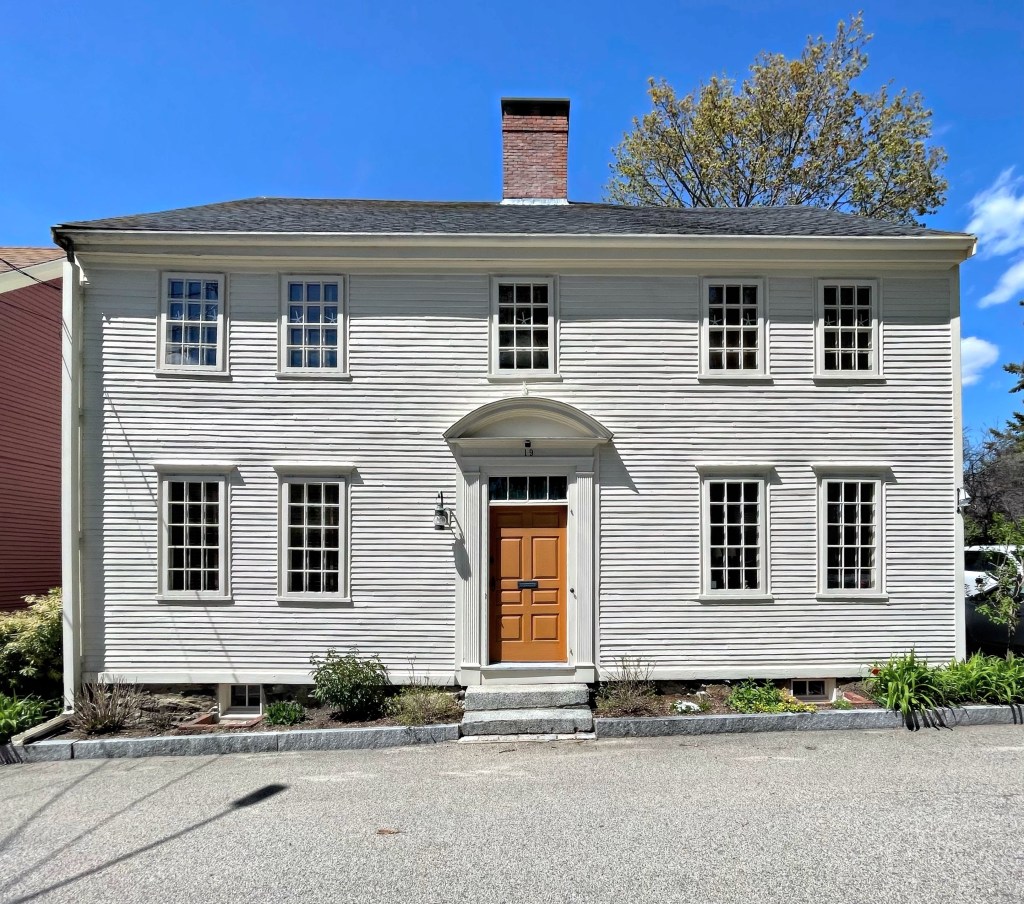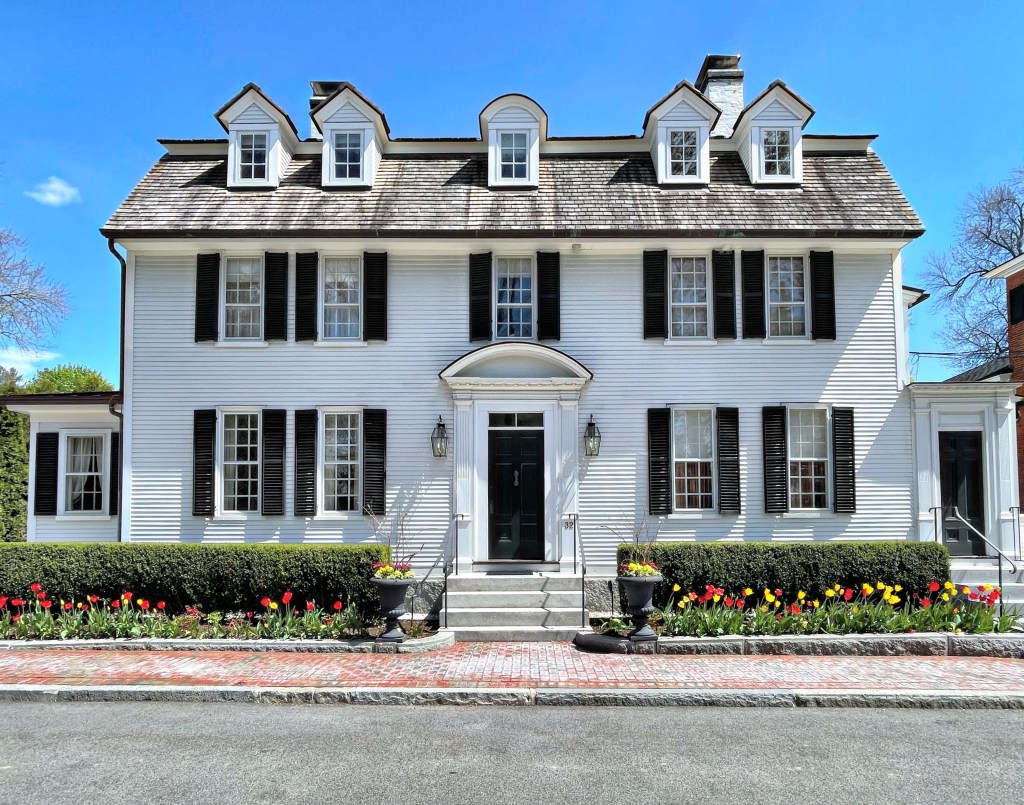
This stunning Late-Georgian house in Portsmouth dates to the end of the 18th century and is one of the many well-preserved homes near downtown. Deed research shows that the property was purchased in 1795 by Amos Tappan from a Nabby Chase (a widow) and he would erect this house on the lot. The house was purchased in 1822 and sold again in 1835 to John Laighton, the namesake of the house. John Laighton (1784-1866) was the eleventh of thirteen children. His family were “mechanics” – carpenters and makers of sails, blocks, spars, and masts. He became a mast and block maker with his place of employment not far from the relocated Sheafe Warehouse in Prescott Park (featured on here previously). Captain Laighton held the post of Navy Agent for the port of Portsmouth during the presidencies of William Henry Harrison and Andrew Jackson, and he also served as mayor of Portsmouth in 1851. In 1864, two years before his death, John Laighton sold the house to his third son, Lafayette Laighton. The historic home features a massive brick chimney at the center ridge, with clapboard walls atop a fieldstone foundation. The facade has a wood-paneled entrance door with four-light transom, pilasters, and triangular pediment. The house faces southwest with a large front lawn, and it sits next-door to the stunning Gov. Langdon House. Pretty spectacular.





